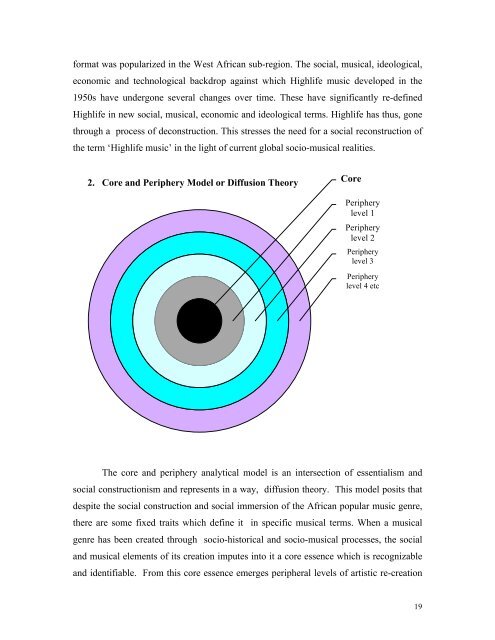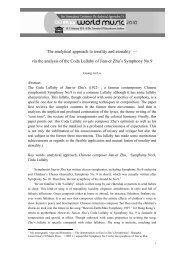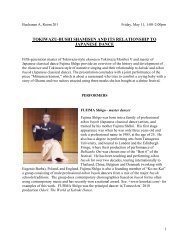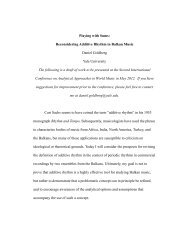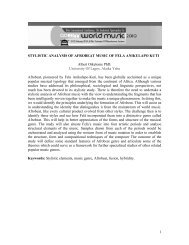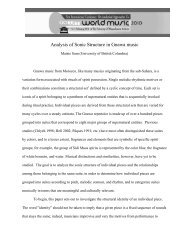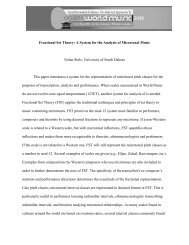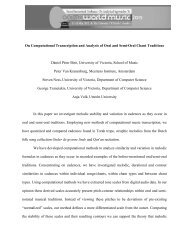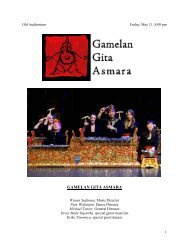A Case Study of Highlife Music - Analytical Approaches to World Music
A Case Study of Highlife Music - Analytical Approaches to World Music
A Case Study of Highlife Music - Analytical Approaches to World Music
You also want an ePaper? Increase the reach of your titles
YUMPU automatically turns print PDFs into web optimized ePapers that Google loves.
format was popularized in the West African sub-region. The social, musical, ideological,economic and technological backdrop against which <strong>Highlife</strong> music developed in the1950s have undergone several changes over time. These have significantly re-defined<strong>Highlife</strong> in new social, musical, economic and ideological terms. <strong>Highlife</strong> has thus, gonethrough a process <strong>of</strong> deconstruction. This stresses the need for a social reconstruction <strong>of</strong>the term ‘<strong>Highlife</strong> music’ in the light <strong>of</strong> current global socio-musical realities.2. Core and Periphery Model or Diffusion TheoryCorePeripherylevel 1Peripherylevel 2Peripherylevel 3Peripherylevel 4 etcThe core and periphery analytical model is an intersection <strong>of</strong> essentialism andsocial constructionism and represents in a way, diffusion theory. This model posits thatdespite the social construction and social immersion <strong>of</strong> the African popular music genre,there are some fixed traits which define it in specific musical terms. When a musicalgenre has been created through socio-his<strong>to</strong>rical and socio-musical processes, the socialand musical elements <strong>of</strong> its creation imputes in<strong>to</strong> it a core essence which is recognizableand identifiable. From this core essence emerges peripheral levels <strong>of</strong> artistic re-creation19


